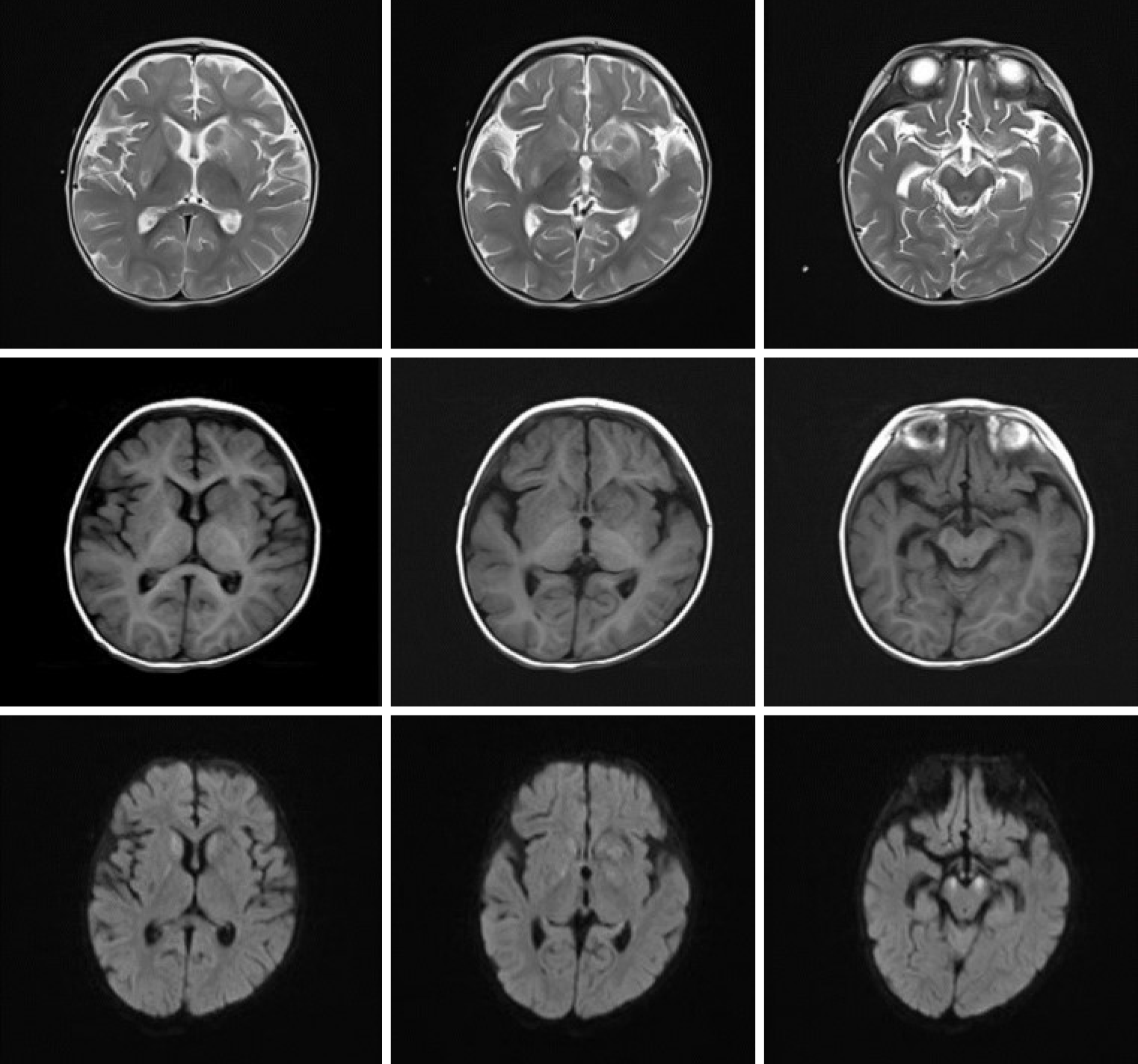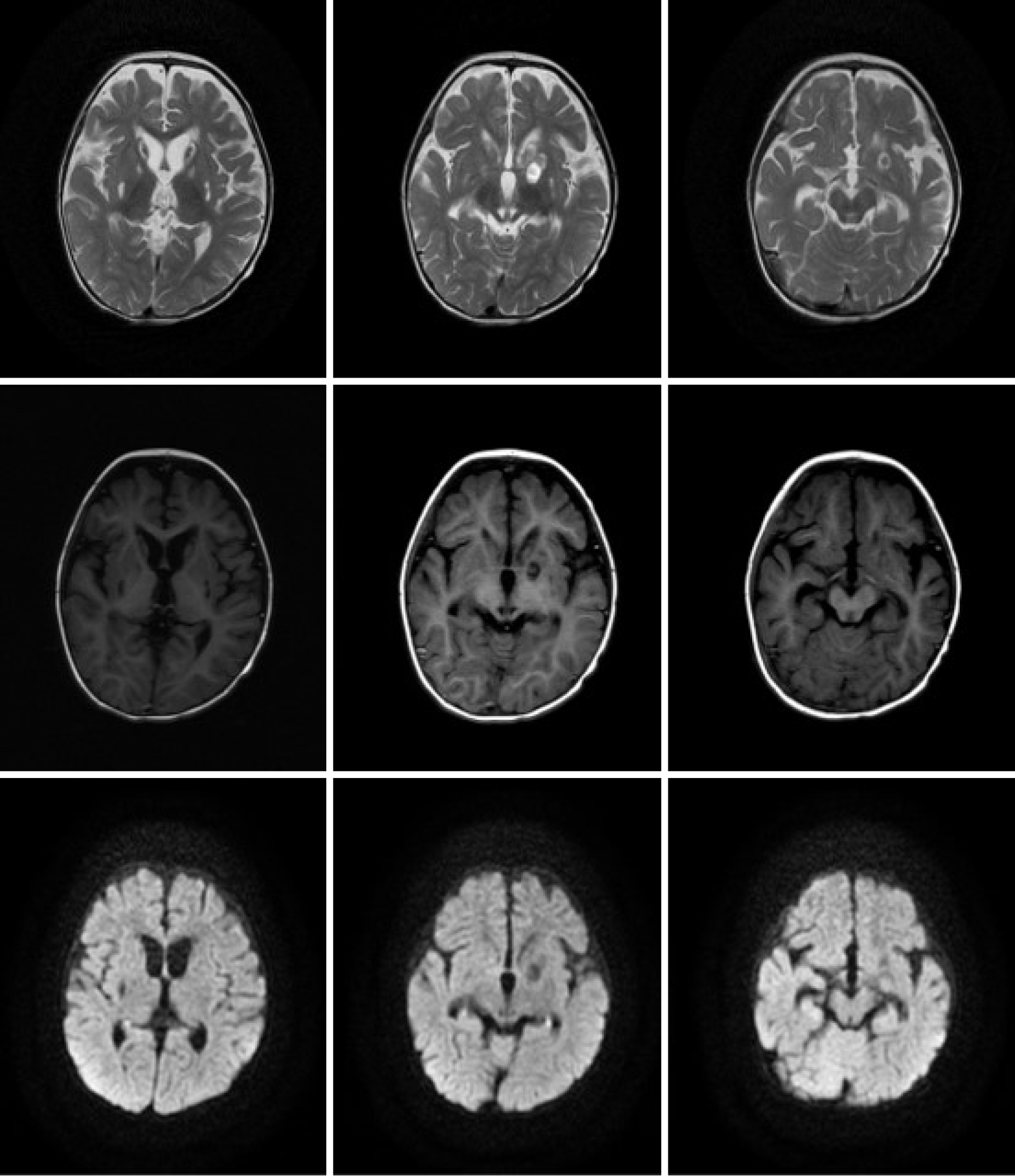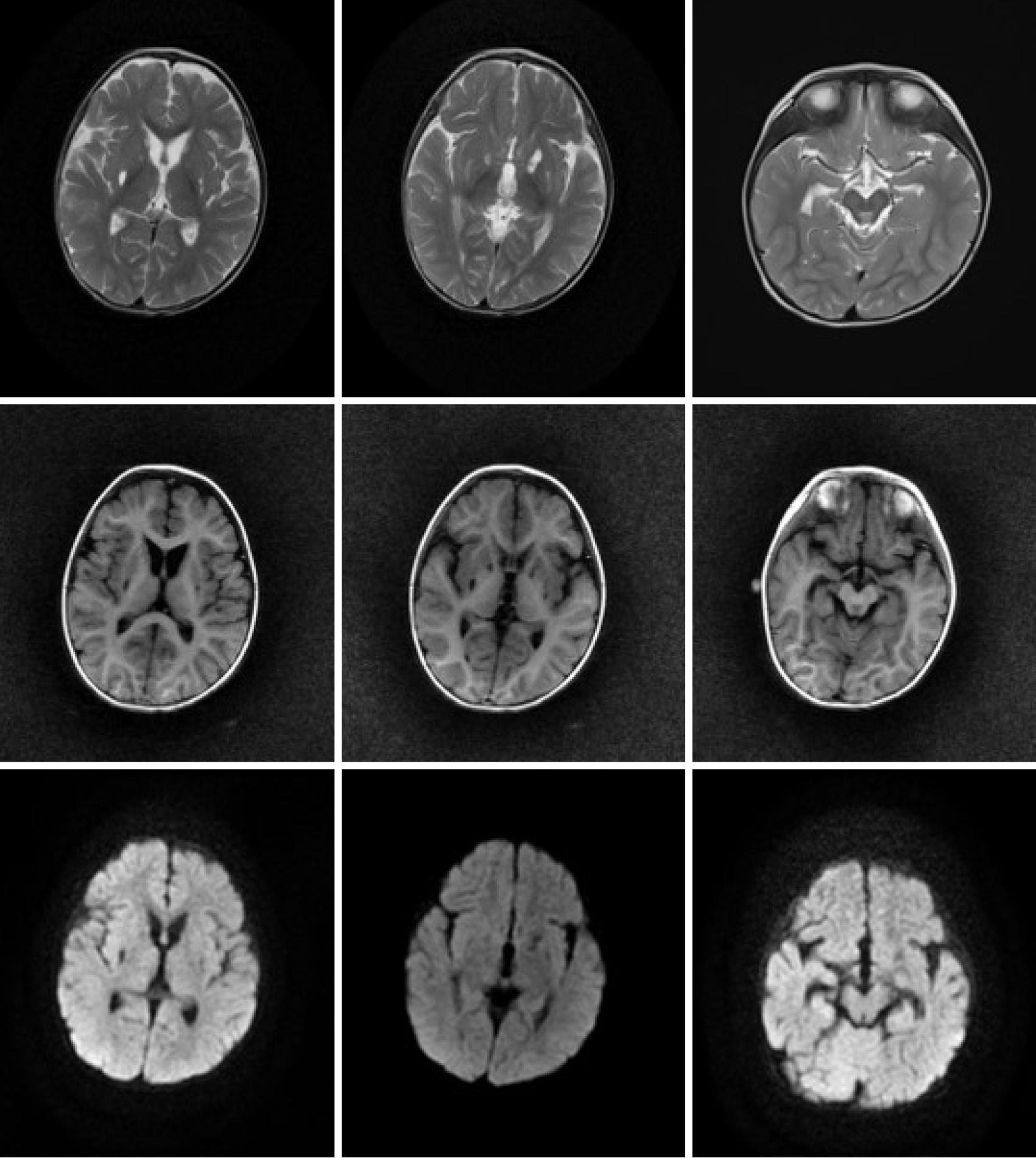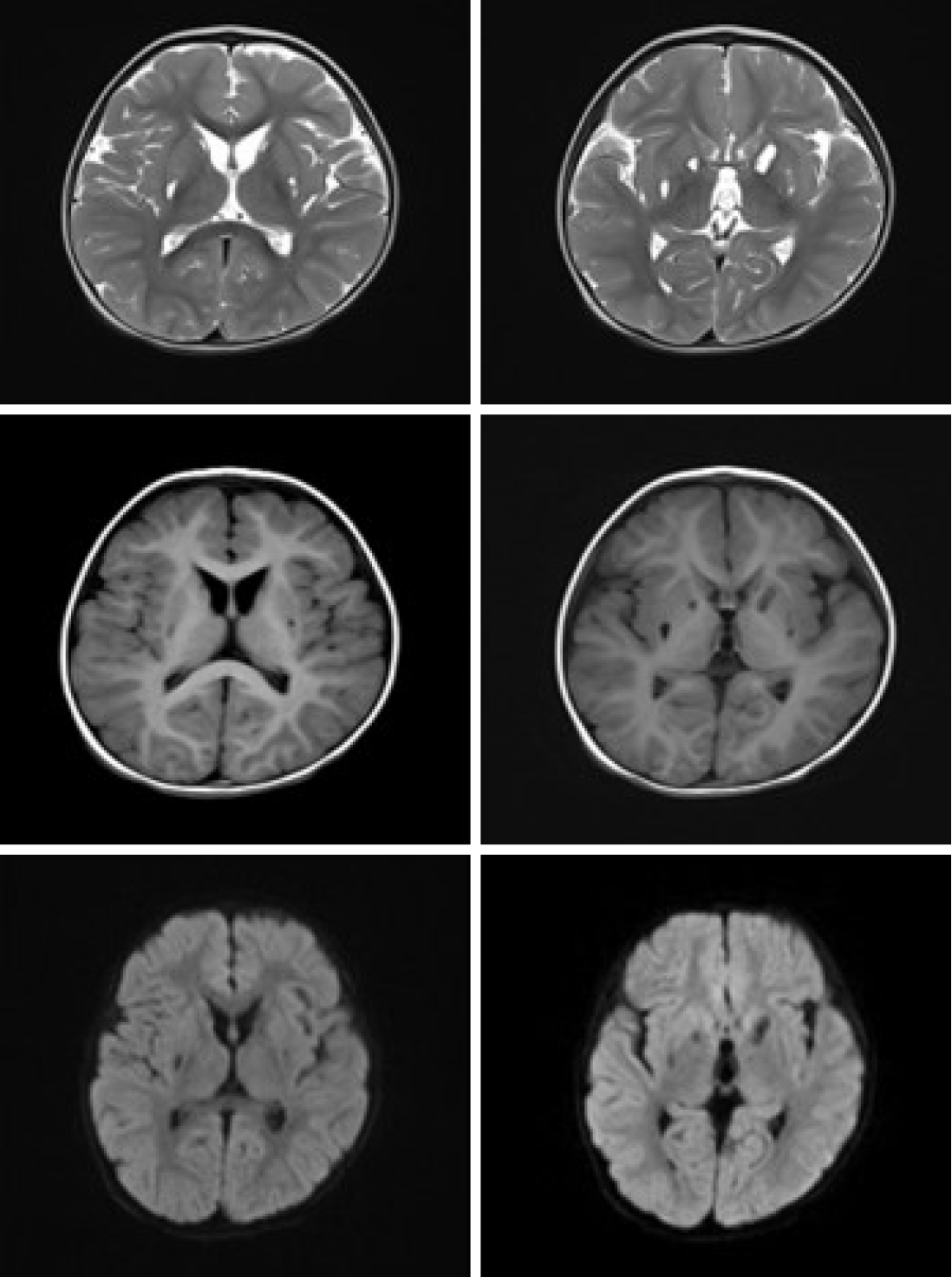Copyright
©The Author(s) 2021.
World J Clin Cases. Oct 26, 2021; 9(30): 9276-9284
Published online Oct 26, 2021. doi: 10.12998/wjcc.v9.i30.9276
Published online Oct 26, 2021. doi: 10.12998/wjcc.v9.i30.9276
Figure 1 Magnetic resonance images of the patient at 10 d after admission showing the lesions of bilateral basal ganglia (caudate nucleus and lentiform nucleus) and mesencephalon (include the periaqueductal) lesions on T2WI, T1WI, and diffusion-weighted imaging.
Figure 2 Magnetic resonance images of the patient at 35 d after admission showing no obvious high signals in the bilateral basal ganglia and mesencephalon on diffusion-weighted imaging.
However, the lesions of basal ganglia did not disappear on T2WI and T1WI. Compared with the previous, these lesions in bilateral basal ganglia diminished with partial softening (caudate nucleus and lentiform nucleus).
Figure 3 Magnetic resonance images of the patient at 6 mo after admission.
Bilateral caudate nuclei became atrophied and softened, and the other old lesions in bilateral lentiform nuclei were liquefied. Lesions in the mesencephalon still disappeared.
Figure 4 Magnetic resonance images of the patient at 1 year after admission showing that the lesions were completely liquefied and bilateral caudate nuclei were still atrophic.
The liquefaction focus of bilateral lentiform nuclei had no significant improvement.
- Citation: Guo J, Ren D, Guo ZJ, Yu J, Liu F, Zhao RX, Wang Y. Emergence of lesions outside of the basal ganglia and irreversible damage to the basal ganglia with severe β-ketothiolase deficiency: A case report . World J Clin Cases 2021; 9(30): 9276-9284
- URL: https://www.wjgnet.com/2307-8960/full/v9/i30/9276.htm
- DOI: https://dx.doi.org/10.12998/wjcc.v9.i30.9276
















